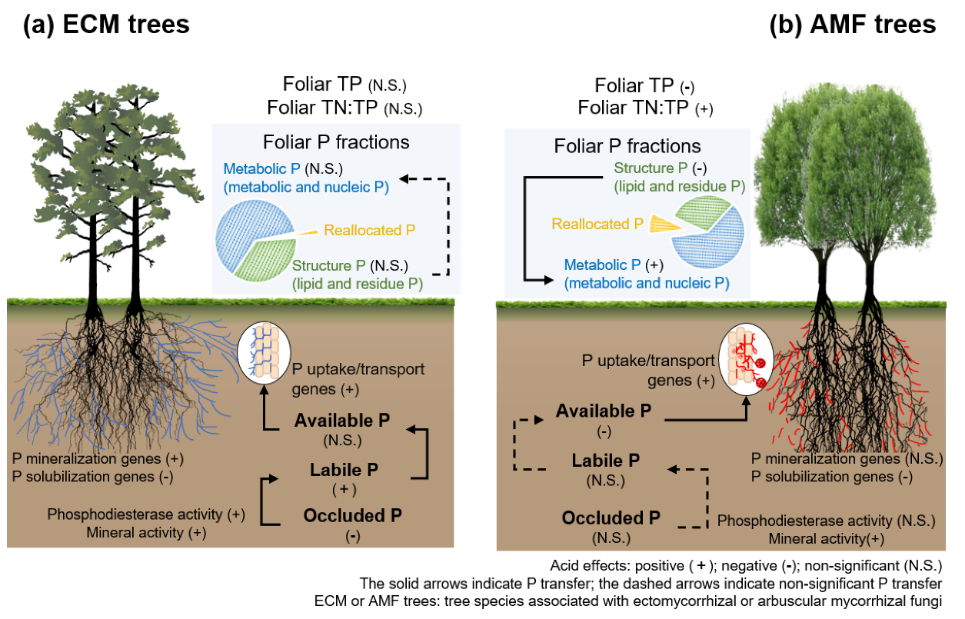
Acid rain is one of the world's most pressing environmental threats. In southern China, decades of persistent acid rain have severely acidified soils, depleted essential nutrients, and endangered ecosystem health. Previous research has shown that soil acidification accelerates the release of iron and aluminum oxides, which bind phosphorus and reduce its availability to plants.
While some plants may offset this phosphorus loss by boosting mycorrhizal fungi-mediated organic phosphorus breakdown, scientists have lacked clarity on how tropical trees respond under increasingly severe acid rain conditions.
To address this, researchers from the South China Botanical Garden of the Chinese Academy of Sciences, carried out a 12-year simulated acid rain experiment in a monsoon evergreen broad-leaved forest in Dinghushan National Nature Reserve. They compared the responses of trees forming ectomycorrhizal (ECM) and arbuscular mycorrhizal (AMF) associations to phosphorus deficiency caused by acid rain.
The findings, published in Soil Biology and Biochemistry, reveal that ECM and AMF trees employ contrasting survival strategies.
ECM trees maintained stable phosphorus availability in the rhizosphere and steady foliar phosphorus levels, primarily by increasing soil phosphatase activity and the abundance of related genes.
In contrast, AMF trees experienced significant drops in both rhizosphere phosphorus availability and foliar phosphorus content. However, they showed more efficient foliar phosphorus reallocation — reducing structural phosphorus while increasing phosphorus in metabolic pools.
The study suggests ECM trees adopt an "acquisitive" strategy, enhancing phosphorus mobilization from the soil, while AMF trees rely on a "conservative" approach, optimizing phosphorus use within leaves.
According to the researchers, these insights could help predict forest ecosystem responses to ongoing acid rain and inform targeted conservation strategies.

Differential responses of ectomycorrhizal fungi trees (a) and arbuscular mycorrhizal fungi trees (b) to simulated acid rain treatments. (Image by HU Yuanliu et al)

86-10-68597521 (day)
86-10-68597289 (night)

52 Sanlihe Rd., Xicheng District,
Beijing, China (100864)

